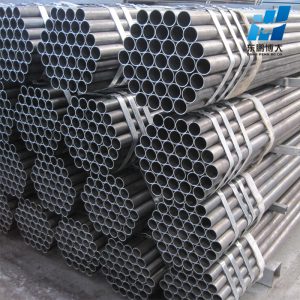The integration of the steel pipe industry
The steel industry has undergone significant changes over the past century, with the integration of various companies playing a major role in its evolution. The industry has a long and rich history, dating back to the 19th century, when the production of steel became a major driver of economic growth and development. Welded steel pipe was used to build everything from railroads and bridges to skyscrapers and automobiles, transforming the world in profound ways.
In the early 1900s, the steel industry was highly fragmented, with numerous small mills and foundries spread across the country. These companies operated independently, producing a wide variety of steel products and competing fiercely with one another for customers. However, this model proved to be unsustainable, as it led to inefficiencies and high production costs. In response, many of these smaller companies began to merge with one another, forming larger, more powerful organizations.

One of the most significant mergers in the history of the steel industry was the creation of United States Steel Corporation in 1901. This company was formed through the combination of several major steel producers, including Carnegie Steel and Federal Steel. The formation of United States Steel Corporation marked the beginning of a new era in the steel industry, as it gave rise to large, vertically integrated companies that were capable of producing cold rolled steel pipe from raw materials to finished products.
The integration of the steel industry continued throughout the 20th century, as companies sought to increase their efficiency and competitiveness. This led to the formation of several other major steel producers, including Bethlehem Steel, Republic Steel, and National Steel. These companies were able to achieve economies of scale and reduce production costs by integrating their operations and investing in new technologies. However, the steel industry faced significant challenges in the latter half of the 20th century, as it struggled to compete with foreign steel pipe supplier that were able to produce steel at lower costs. This led to a period of consolidation, as many smaller steel companies were acquired by larger producers in an effort to stay competitive. This trend continued into the 21st century, as the steel industry faced new challenges such as increasing environmental regulations and rising energy costs.
Today, the steel industry is dominated by a few major players, including ArcelorMittal, Nippon Steel, and POSCO. These companies have continued to integrate their operations, investing heavily in research and development to improve their products like round steel pipe and processes. They have also expanded their operations beyond their home countries, with many steel producers now operating on a global scale. Despite these efforts, the steel industry continues to face challenges, including rising energy costs, environmental concerns, and competition from alternative materials such as aluminum and carbon fiber. However, the integration of the industry has allowed it to remain competitive, and it is likely to continue to evolve and adapt in response to changing market conditions and technological advancements.
Tel: +86 18202256900 Email: steel@tjdpbd.com









